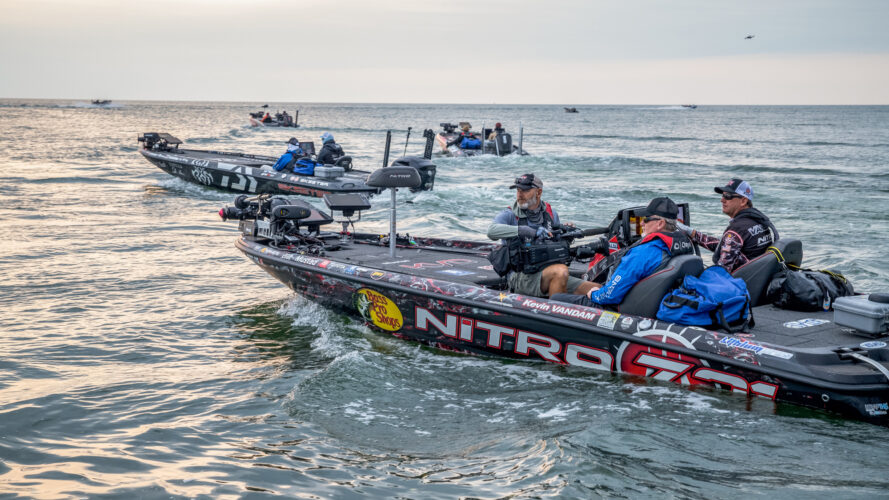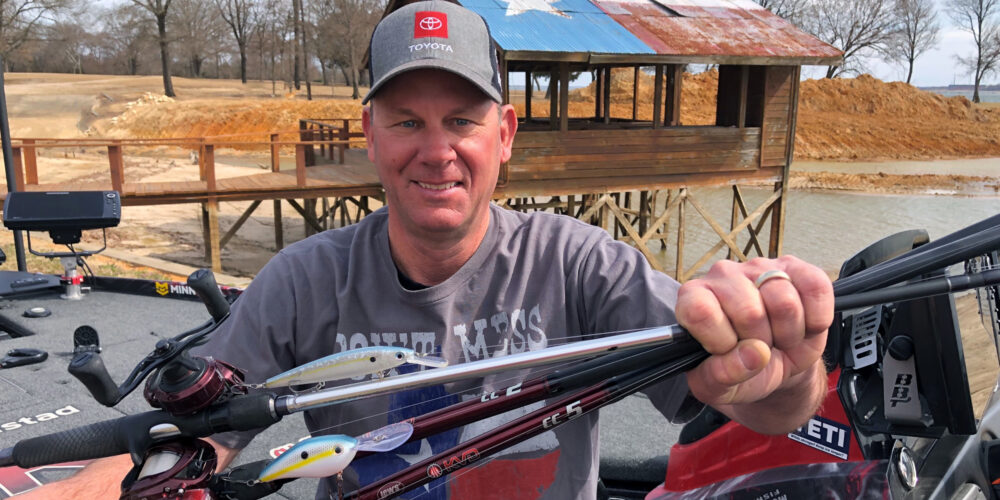In my previous column I went over some ground rules for upgrading older boats or smaller boats with today’s modern fish-finding technology, especially in the realm of electronics. This time around we’ll look at boat positioning tools and technology, specifically trolling motors and shallow-water anchors and how much you need of each.
“Smart” Trolling Motors
If you still have an older cable-drive foot-controlled motor, it might be time to upgrade to a modern-day trolling motor with power steering and Spot-Lock. We have all heard of smart phones; well, think of these new motors as “smart” trolling motors. They will double your fishing efficiency while cutting your physical fishing fatigue in half.
Power steering in a trolling motor removes foot pedal torque and makes boat control effortless. Spot-Lock incorporates GPS technology in trolling motors that can hold your boat in place without holding the pedal at all. Having your trolling motor “lock” the boat in the place with the push of a button is a modern miracle. No more standing in the bow fighting wind and waves to hold a spot while trying to retie a lure or unhook a fish; now the trolling motor will do the work for you. Being able to make exactly the same cast over and over again without fighting to maintain boat control is the epitome of fishing efficiency.
My personal choice in trolling motors is a 36-volt, 112-pound thrust Minn Kota Ultrex with a 45-inch shaft. Ultrex has set the standard for this new breed of smart trolling motor in the fishing industry. A big question with tolling motors is whether to go with a 24-volt (80-pound thrust) or 36-volt (112-pound thrust). A lot of this is determined by the size of the boat. If you have a smaller 17- or 18-foot boat that does not have room for a third trolling motor battery, the Ultrex comes in a 24-volt model as well. Obviously a third battery takes up room and adds weight. So in my opinion, for boats that are 18 feet and less, the 24-volt, 80-pound thrust motor will get it done. But 19 feet and up, you better be looking at 36 volts with 112 pounds of thrust. The real toss up comes in that 18- to 19-foot zone. As you might expect, I want as much trolling motor power as I can get. I’ve used Nitro Z18 boats with a 36-volt Ultrex and you can cover some serious water with 112 pounds of thrust on an 18-foot boat. Remember, if it’s too much power, you can always turn it down, but if you don’t have the power, you can’t turn it up.
Shaft length is also another consideration. The “standard” length for most bass boats is 45 inches, but some guys who fish big water a lot use a 52-inch shaft to help keep the foot in water more of the time when bouncing up and down.
No matter what pound thrust or shaft length you choose, I would certainly recommend getting a trolling motor with the sonar transducer built right into the foot. This not only protects the transducer inside the trolling motor foot, it eliminates the hassle of having to run a wire down the trolling motor shaft. The Ultrex has several options for transducers built into the foot, including Mega Down and Side Imaging.
As for batteries and wiring, make sure you have the proper power and electrical carrying capacity to feed your new motor. I addressed this in the last blog about electronics as well. Basically, no matter what type of battery you choose, you will need group 31 deep cycle batteries to power your trolling motor all day and 8 AWG marine grade wire running to your trolling motor plug. Minn Kota provides a handy reference guide on what size wire you need at their website.

Anchor Down
Next on the list is a shallow water anchor, another product that will change your life on the water. One of the most common questions I get on this topic is why do I need both a Spot-Lock trolling motor and a shallow water anchor if both do the same thing. Fair question. If you are fishing in 3 feet of water or less with a heavy wind blowing your boat around, the constant-on prop wash from the trolling motor is going to stir up the bottom, which will spook fish. So in this case, stapling down with pole anchors is far less obtrusive. On the other hand, if you are fishing out over 15 feet or more, there is no shallow water anchor that will go that deep, so you need Spot-Lock on the trolling motor to hold you in place.
I suppose if you live in Florida and only fish shallow lakes like Okeechobee, it could be argued that shallow water anchors would work for most of your fishing and Spot-Lock is not as critical. Or if you live up in the Ozarks and mostly fish Table Rock or Bull Shoals offshore, Spot-Lock would be far more valuable than shallow water anchors. But those are extreme cases. For a majority of the lakes in this country, both types of positioning devices have become the standard in modern-day bass boat control.
I also get asked about the differences in Minn Kota’s Talon and Raptor anchoring devices. Both are designed to grab the bottom with a spike to hold your boat in place. The Raptor is a hydraulic-based unit that deploys like a mechanical robotic arm into the water. The Talon is electric-based and uses telescoping segments to reach the bottom, straight below the boat. The Raptor only comes in 8- and 10-foot sizes while the Talons also have models that will reach 12 or 15 feet depths. Obviously, if you need to hold in deeper depths, then a Talon is the choice. Also, some anglers like the straight-down design of the poles on the Talon better because there are no “elbows” that reach out off the back of the boat when deployed. The good news is Minn Kota offers two different types of anchors to suit the angler.
Finally, those looking to buy shallow water anchors often ask, why do you need two of them when it seems like one would do the job?
One Raptor or Talon will certainly hold your boat in place, especially with smaller boats in the 19-foot or less category. But just know that the wind is going to blow your bow around and the boat will pivot on that one pole. The deal with two is that they will hold you securely in place even with a wind blowing across your bow.
Finally, if you don’t already have one, consider adding an onboard battery charger to your boat. Plugging in just one cord after a day of fishing is much easier than the old days of lugging big, cumbersome chargers around and hooking each one up to individual batteries. Plus, Minn Kota’s Digital Chargers are much better at topping off your batteries at the proper level and then maintaining the charge to greatly extend the life of your batteries.
If you are thinking of making a technological renovation on your boat, hopefully these last two blogs have given you some food for thought in terms of what you need to get up to date in fishing technology, electronics and boat positioning tools.






Leave A Comment